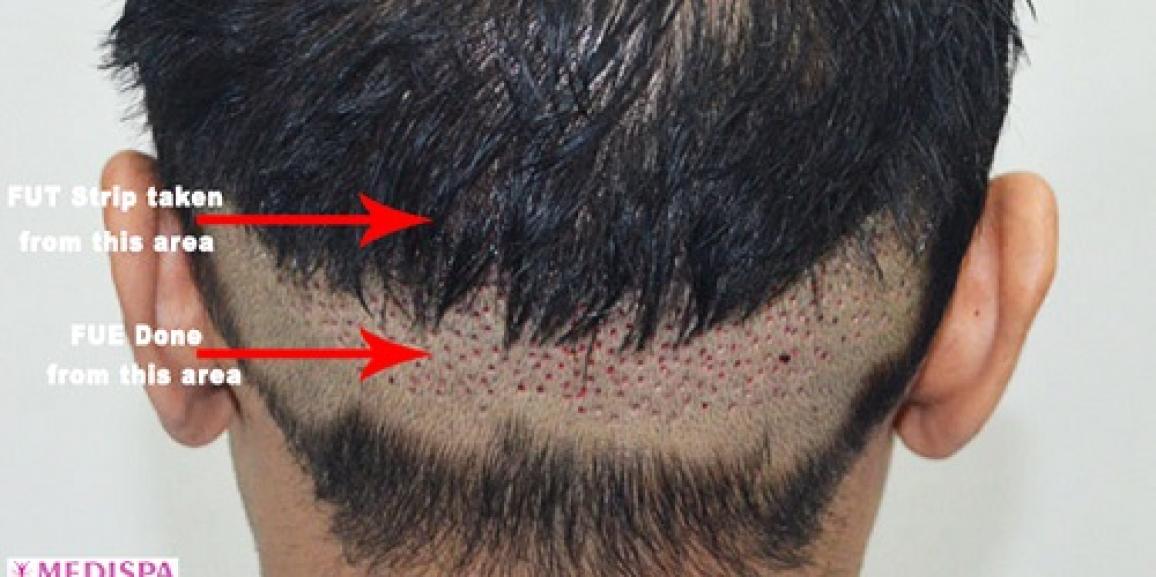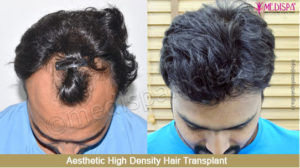
Understanding the hair transplant process is crucial in making an informed decision and ensuring that you are fully aware of what it entails. While hair transplant is considered the most effective solution for hair loss, it is important to be aware of certain limitations and concerns associated with the procedure. In this regard, we will provide a detailed explanation of the “donor area,” which is a critical aspect of the hair transplant process, to enhance your understanding.
The success of hair transplant in India has gained global recognition due to the exceptional results achieved by Indian clinics. The innovative techniques employed by Indian surgeons have been widely praised, attracting individuals from around the world for hair transplant tourism in India. While the affordability of hair transplant cost in India is a significant factor, it is important to note that people choose to travel overseas not solely based on cost, but also because of the high quality of hair transplant services available here.
Hair transplant: basic procedure
Hair transplantation is essentially a reconstructive surgical technique that entails extracting hair grafts from donor regions and transplanting them to areas with baldness. The process involves two fundamental steps: harvesting the hair grafts from the donor region and subsequently transplanting them to the desired bald area.
Although the procedure itself is relatively straightforward, it necessitates thorough pre-planning during the initial consultation. This consultation should be conducted comprehensively by the hair transplant surgeon to ensure optimal results during the procedure.
Donor area and its selection
The hair transplant procedure requires an adequate number of hair follicles in the donor areas to ensure sufficient coverage. The primary criterion for the procedure is to have a satisfactory hair density in the donor areas, making you a suitable candidate.
The most common donor area is the back and sides of the head, followed by other body hairs excluding the scalp. The rationale behind selecting the donor area is based on the fact that only DHT resistant hair grafts are chosen for harvesting, as they lack receptors for androgenic hormones.
These hair grafts remain unaffected by androgenic hormones and are considered permanent throughout your lifetime. Therefore, we can assure that hair transplant provides permanent and natural-looking results.
The areas with permanent hair roots are referred to as safe donor areas, which are specifically chosen for harvesting the hair grafts.
Donor zone and how to select the area?
It is crucial for the success of a hair transplant procedure that the donor areas have sufficient hair follicles to provide adequate coverage. The most common donor areas are the back and sides of the head, followed by other body hairs that are not on the scalp. The reason for selecting these donor locations is that they contain hair grafts that are resistant to DHT, a hormone that can cause hair loss. Since these transplanted hairs are not affected by androgenic hormones, they will not change or fall out. This means that a hair transplant can provide long-lasting, natural-looking results for the rest of your life. It is important to carefully choose the locations with permanent hair roots, as they are considered safe donor sites for harvesting hair grafts.
What does overharvesting and violation of the safe donor area entail?
The donor zone of the scalp refers to the area that contains hair roots that are permanent or resistant to DHT. The significance of this area lies in the fact that if hair roots are extracted from here, the results will be permanent, which is the main advantage of hair transplant surgery.
Unfortunately, in many cases, inexperienced surgeons attempt to overharvest this region in order to achieve a high-density hair transplant or to compensate for the damage caused to hair grafts during the procedure. However, both of these methods have a negative impact on the final outcome, as the transplanted hair roots do not survive and are likely to be lost.
Therefore, it is crucial to choose the appropriate location for harvesting hair roots, also known as a safe area. When the donor region is overharvested, the density of hair decreases and the donor area appears thin, resulting in an unsuccessful hair transplant.
To achieve the best results and preserve your hair follicles, it is essential to entrust the treatment to skilled professionals.
Role of donor area in hair transplant
The importance of the donor area in hair transplant procedures cannot be overstated. It plays a crucial role in determining the feasibility and success of the procedure. Here are several reasons why the donor area is so important:
- Confirming feasibility: Before proceeding with a hair transplant, it is essential to assess the density of hair in the donor area. This is because the procedure relies on using the patient’s own hair grafts. If the donor area does not have sufficient hair density, the procedure may not be feasible.
- Assessing hair density for coverage: The donor area is carefully examined to determine the amount of hair available for harvesting and transplantation to the balding areas. The density of hair in the donor area is a key factor in deciding whether the hair transplant procedure can provide adequate coverage.
- Ensuring permanent outcomes: It is crucial to avoid over-harvesting and damaging the safe donor area. Over-harvesting can negatively impact the permanency of the results and deplete the hair density in the donor area. Therefore, a thorough evaluation of the donor area is necessary to ensure long-lasting and satisfactory outcomes.
- Determining the correct technique: By assessing the donor area, the surgeon can recommend the most suitable hair transplant technique to the patient. If the hair density in the donor area is inadequate, the FUT (Follicular Unit Transplantation) technique, which requires harvesting from a smaller area, may be suggested.
In conclusion, the donor area is of utmost importance in hair transplant procedures. Its assessment helps determine the feasibility of the procedure, the amount of hair available for transplantation, the permanency of the results, and the appropriate technique to be used.





